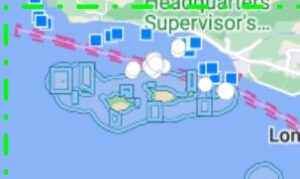On a gray morning this past March, a half-dozen scientists scanned the sea while bobbing offshore of Chile’s Atacama Desert. When an enormous whale surfaced, their small boat zoomed over to meet it. Marine biologist Susannah Buchan strapped on a waist harness, leaned out over the bow and waited. As the fin whale porpoised again, she placed a forearm-sized neon orange tracker near its dorsal fin. The team would retrieve the tracker the next morning after its suction cups released to download the whale’s movements and listen to its vocalizations.
Fin whales are the world’s second-largest whale species. You might not have heard much about them since “they aren’t the biggest, the jumpiest or the most vocal of whales,” Buchan says. Instead, their claim to fame is more depressing: Fins are the whales most frequently killed by large ships.
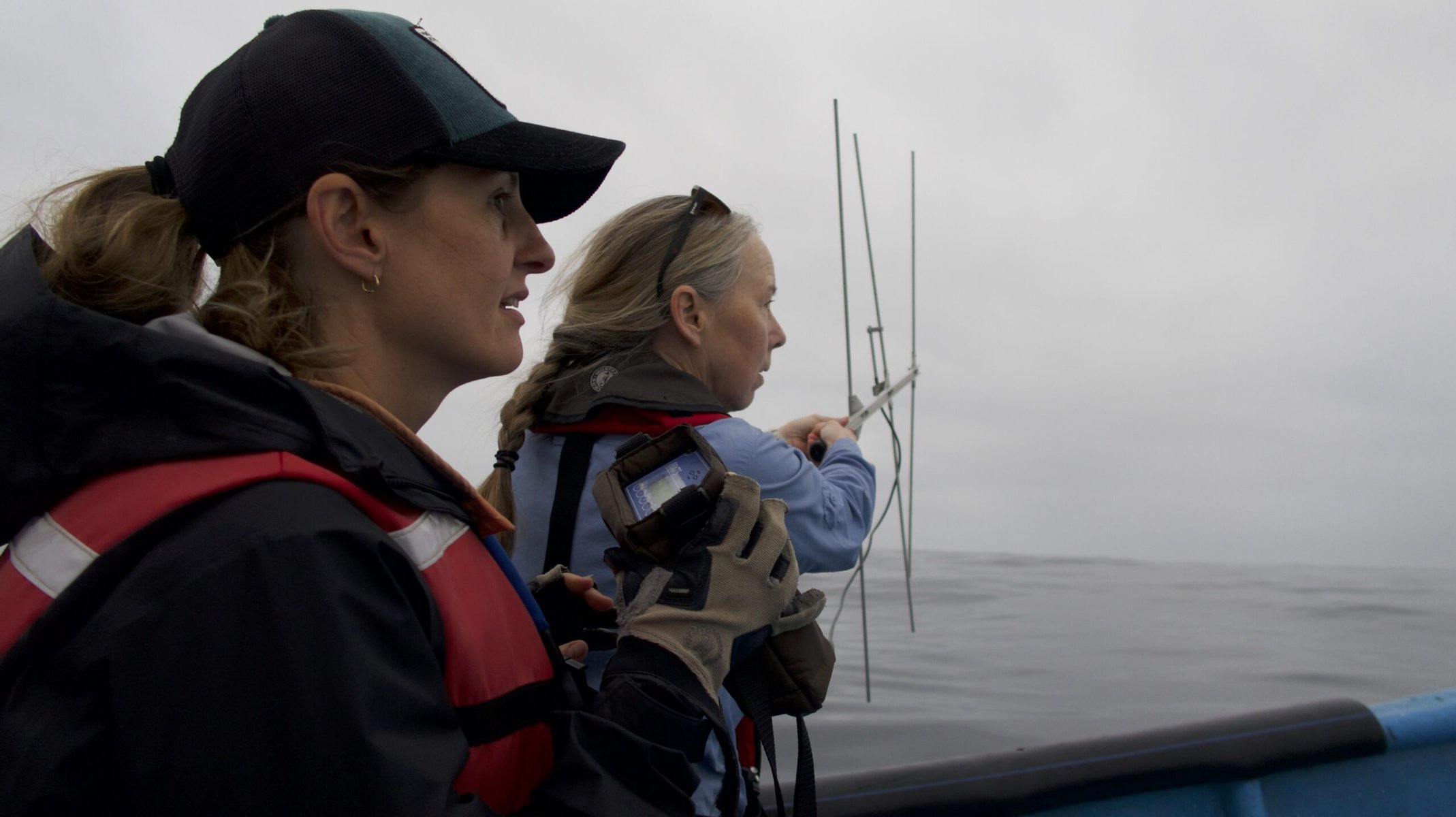
Buchan has been tagging fin and blue whales — both of which are listed as endangered species — for the past five years in Chile, in hopes of collecting data that will help ships avoid hitting them. What she’s learning from listening to their underwater sounds might save the lives of some of the largest animals to ever live on our planet.
Thousands of whales are killed or injured each year from collisions with ships. With a four-fold increase in commercial maritime traffic since 1992, more whales are becoming roadkill in ocean shipping lanes. Roughly 90 percent of the world’s goods are transported over the ocean, mainly by giant cargo vessels. Even more terrifying for cetaceans, a study in Nature predicts that by 2050, the world’s oceans will have up to 12 times as many ships as they do today.
We know ship strikes are one of the main causes of death for marine giants, but no one knows exactly how many whales are struck. This is partly because only about 10 percent of collisions are observed or reported, according to NOAA, and partly because most whale carcasses sink when they die. Only an estimated 1 to 17 percent of the carcasses of endangered whales are ever found.
Buchan’s research, along with other scientists’ work around the globe, is helping prevent ships from colliding with whales. Acoustics data in particular — such as sounds collected from the fin whale Buchan tagged on that March morning — are informing guidelines about places ships should avoid, when they should slow down, and even providing real-time alert systems if whales are near.
Simply looking for whales has its limits: It’s difficult to see very far underwater. Sound, on the other hand, can travel for miles through the ocean. Underwater microphones, called hydrophones, are used to listen for everything from earthquakes and enemy submarines to tiny coral polyps and enormous whales. “Listening to the soundscapes of coral reefs or deep benthic communities is just like listening to all the different types of birds in a forest,” Buchan says.
Weighed down by negative news?
Our smart, bright, weekly newsletter is the uplift you’ve been looking for.And when it comes to whales? “A hydrophone on the bottom of the ocean is the only way you can monitor a whale day and night, especially in bad weather,” Buchan explains.
In the glaciated fjords of Patagonia in southern Chile, Buchan and her colleagues have used hydrophones to determine when blue whales are most at risk for ship strikes amidst the heavy traffic around Puerto Montt. “Listening to the ocean to detect whales gives us really tangible, concrete strategies for their protection, like a traffic slowdown scheme in the summer when lots of them are present,” says Buchan.
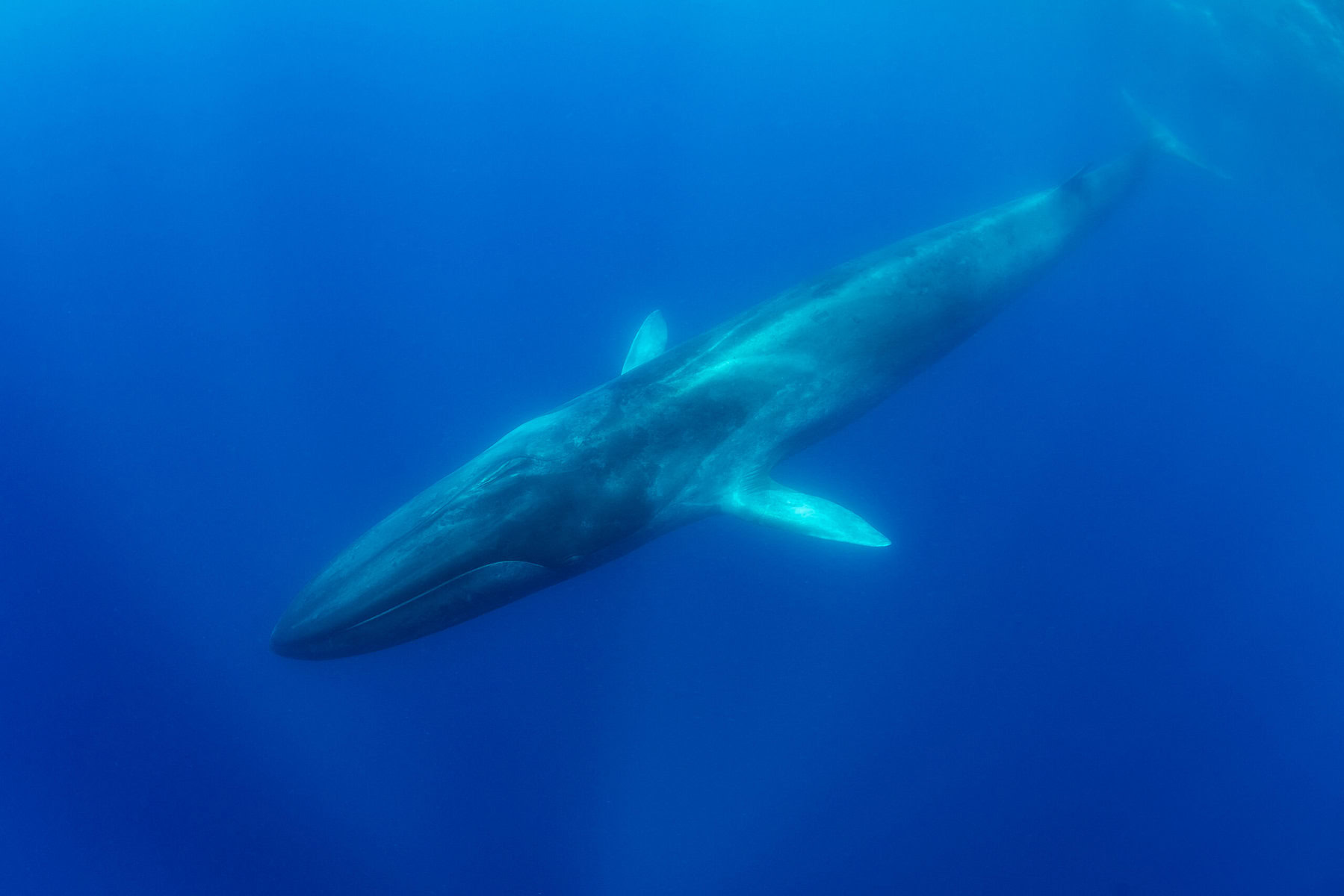
Two of the largest associations of shipowners in southern Chile, ARMASUR and INTESAL, worked with the World Wildlife Fund to set up a voluntary whale alert system. This allows vessels to slow down to avoid collisions with cetaceans. “You always want to go with the simplest solution first, which is to slow down ships or move shipping lanes,” Buchan says.
Research has shown that slowing to 10 knots or less significantly lowers the danger to large whales. Slowing down ships doesn’t just protect whales. It also reduces vessels’ climate-warming emissions. Plus, it cuts down on noise pollution that disturbs all sorts of ocean critters. Marine animals — and even some marine plants — use sound to communicate with each other, to find food, mate or navigate. If it’s too noisy underwater from passing ships, these plants and animals suffer.
In crowded areas of Patagonia where the inner sea is very narrow and it’s not possible to reroute shipping lanes or eliminate existing ports, “it might make sense to invest in a real-time alert system,” Buchan says. This means using buoys to relay the locations of whales based on hydrophones that detect vocalizations.
Her tags are also showing that fin whales hang out near the surface at night rather than diving down to feed. Since captains can’t see whales in the dark, a slow-down policy is best in shipping lanes frequented by fin whales.
Further north in the Pacific, NOAA recorded 49 fatal whale-ship collisions off California between 2007 and 2020, including the deaths of 18 fin, 15 humpback and 13 blue whales. To curb collisions near San Francisco and Southern California, some of the world’s largest shipping companies — including Maersk and Evergreen — are voluntarily slowing down from May 1 to December 15 through the Protecting Blue Whales and Blue Skies Program.
In exchange for slowing down, participating vessels receive awards and positive recognition. In 2023, the program reported that 33 shipping companies enrolled, reducing nitrogen oxide emissions by 1,250 tons and greenhouse gases by 45,000 metric tons. Slowdowns lowered the risk of fatal collisions with whales by 58 percent and cut underwater noise by 5.4 decibels last year.
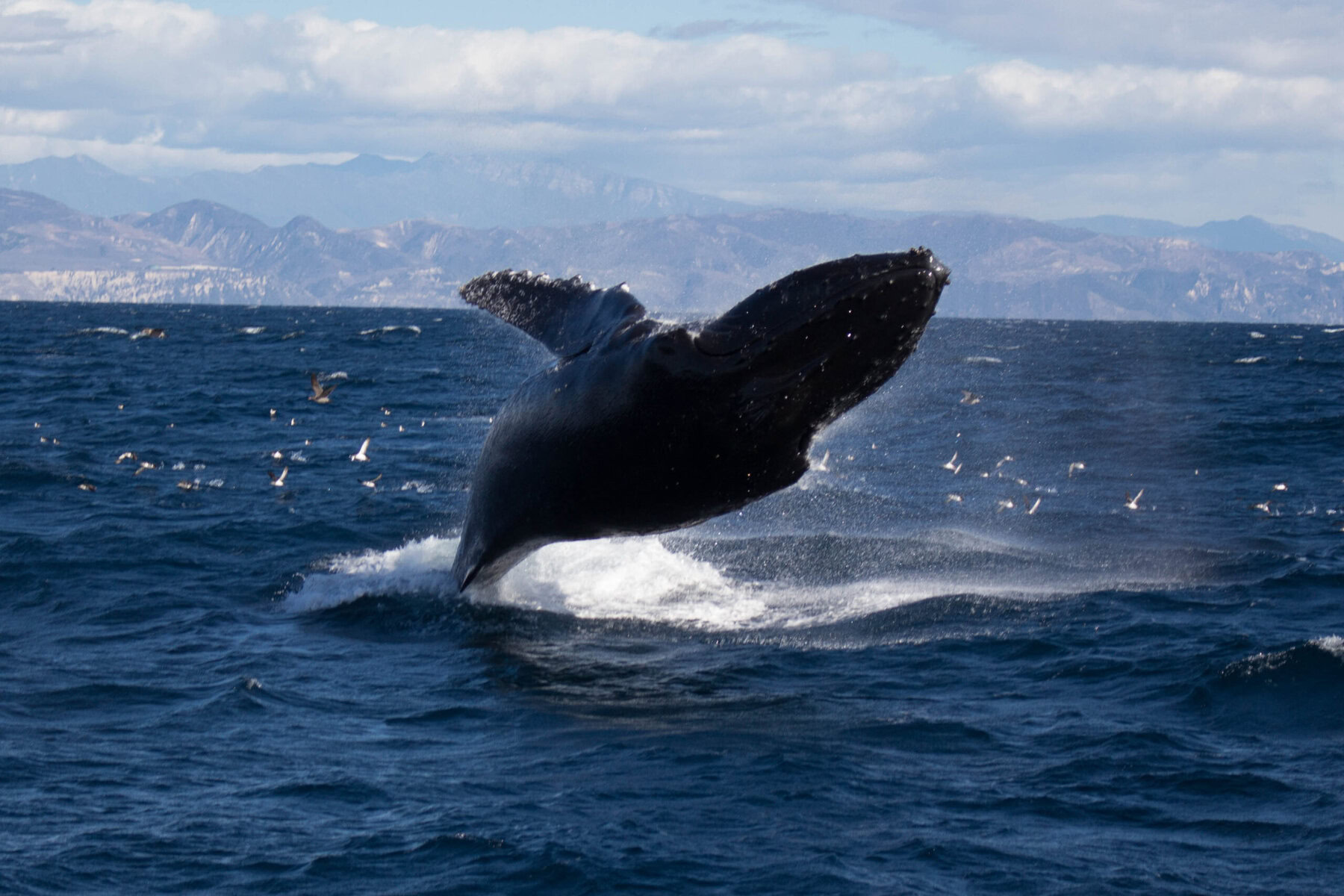
Another way people are protecting whales in California is by using an app called Whale Safe, developed by the University of California Santa Barbara’s Benioff Ocean Initiative. This tool gives captains near real-time updates on whales in the area by compiling data from acoustic monitoring buoys, whale habitat models and visual sightings from NOAA surveys or whale watching trips in the area.
“Sound gives you a view of the things that you cannot see underwater,” explains Anna Širović, an oceanographer who specializes in marine bioacoustics at the Norwegian University of Science and Technology. Širović helped design and deploy Whale Safe’s acoustic monitoring system. Using hydrophones on the seafloor, she says, is “much more cost-effective than sending hundreds of divers out, or funding visual observers on ships to survey for endangered marine mammals.”
A bevy of innovative underwater sound technology programs are sprouting up around the world to help keep whales safe.
An app called Whale Alert aims to prevent boats from hitting the endangered North Atlantic right whale off the East Coast of the US. Fewer than 360 North Atlantic right whales are left on Earth, and nearly 90 percent of their deaths are caused by vessel strikes or entanglement.
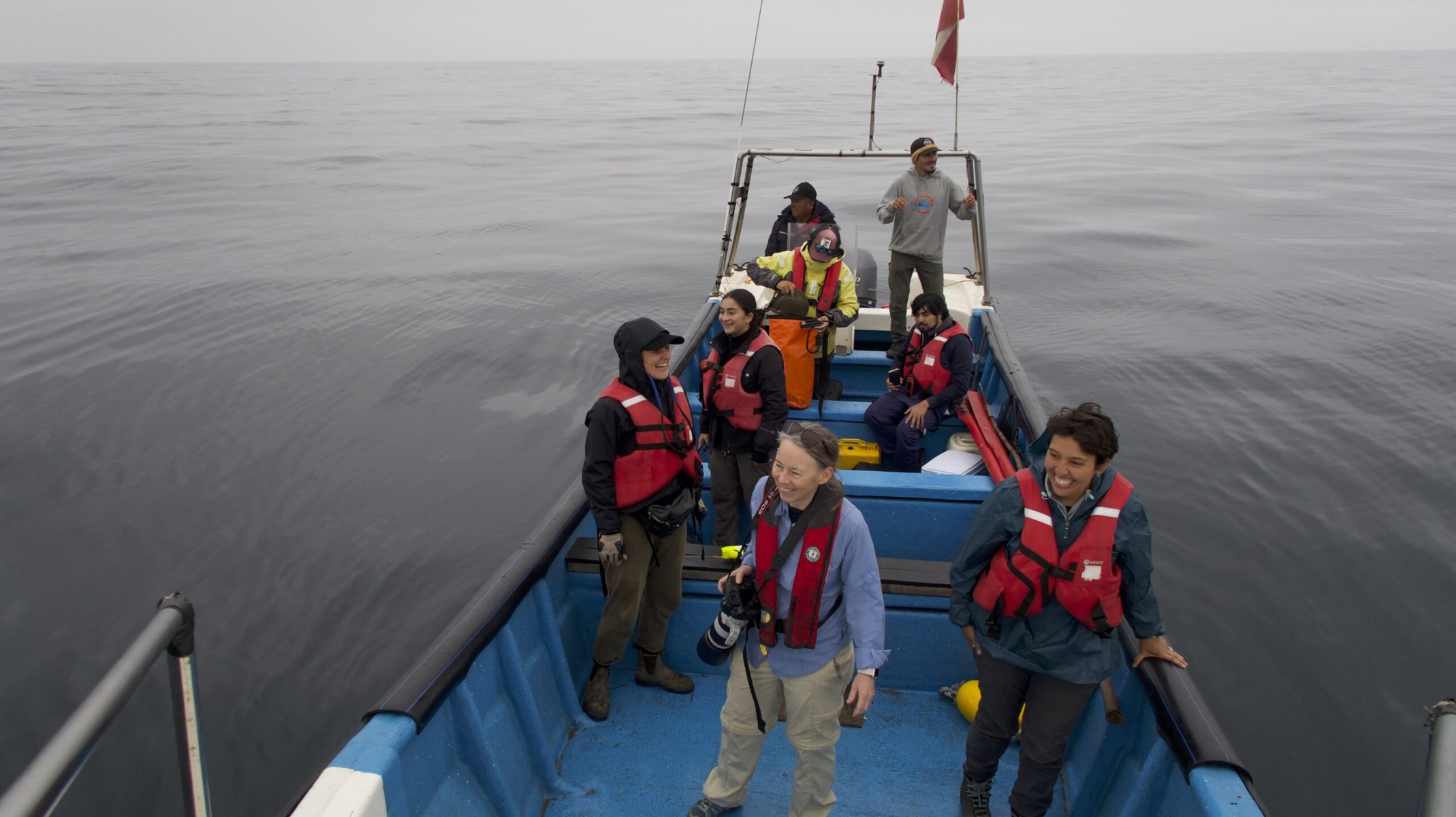
Another acoustic-based system called SeaPicket is helping offshore wind companies minimize their vessels’ impact on right whales. Developed by ThayerMahan, the company created the system by adapting underwater sound technology originally designed for the US Navy. “A lot of folks that started down the path of listening for enemy submarines are now really excited about listening for whales,” says Christian Glander, vice president of ThayerMahan’s offshore programs.
SeaPicket uses 32 underwater microphones that each stretch 100 meters along the seafloor. When a whale vocalizes, each hydrophone amplifies the sound and filters out all the other ocean noise to identify the species and location. “We equate it to the Super Bowl: If you hung a microphone above the stadium, all you’d hear is the noise of the crowd. But if you take a parabolic mic and focus in on the huddle, you’ll hear what the quarterback is saying. That’s what we can do at sea,” Glander says.
He says that an aerial flight might identify a few whales in a given area, whereas SeaPicket’s hydrophones detected over 1,000 right whale vocalizations in a single day last February.
In the Mediterranean Sea, a coalition of organizations is developing another new acoustic whale detection and anti-collision system called SeaDetect. The first vessel successfully installed and began navigating with the system in July. In Greece, where half of all sperm whale deaths are due to ship strikes, the government rolled out the “SAvE Whales” hydrophone detection and ship alert system. And in August, Arcadia Shipmanagement was the first Greek shipping company to announce it will voluntarily reroute its vessels to protect sperm whale mothers and calves that congregate in the Hellenic Trench west of Crete.
Farther north in the Arctic Ocean near Norway, researchers recently demonstrated that underwater fiber optic telecommunication cables can pick up low-frequency whale songs. This means it might be possible to transform existing fiber optic cables into a series of hydrophones to monitor for whales around the world.
Experts hope these emerging examples of acoustic alert systems will inform boats all over the world when whales are near so they can avoid hurting these marine giants. “Nobody wants to hit a whale,” Glander notes. “When you think about what it would take to protect whales, it’s really not huge dollars.”
All scrolling images are by Brianna Randall.


